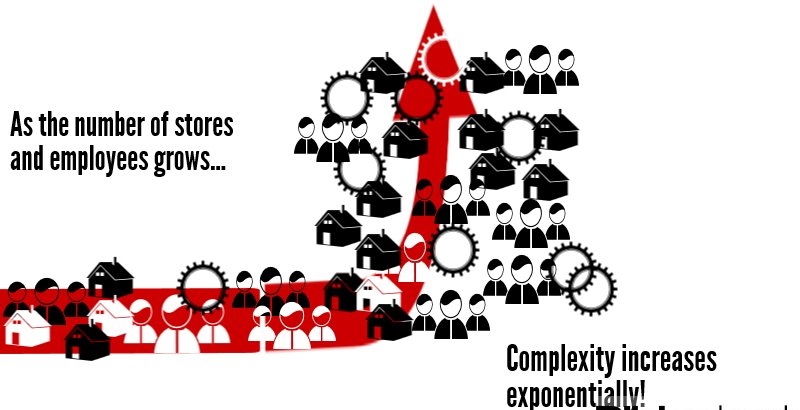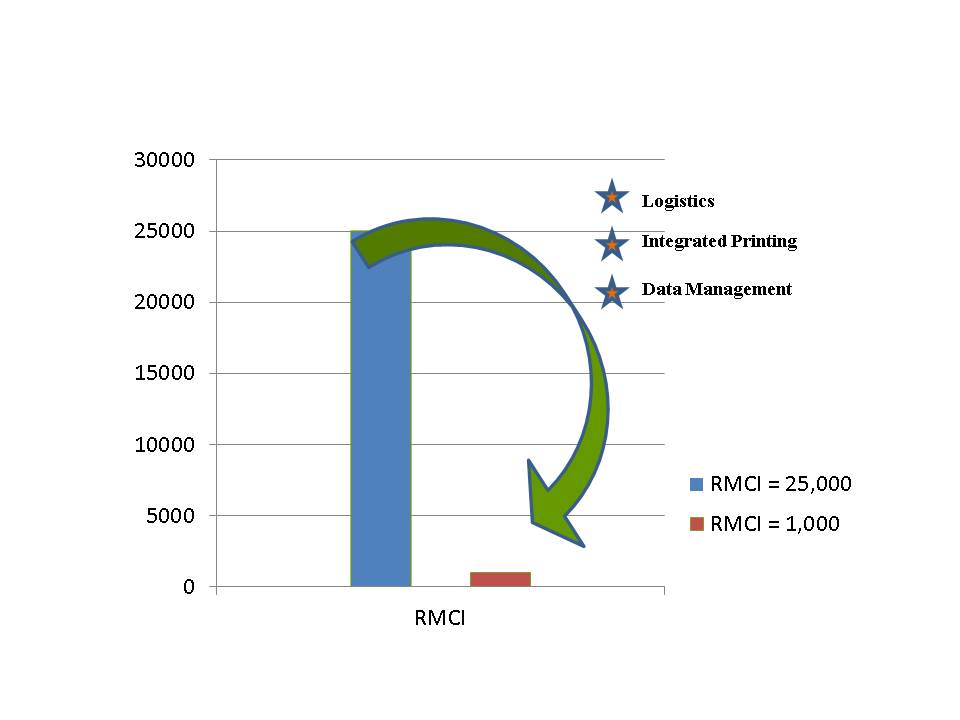EXPERT COLUMN: The Retail Merchandising Complexity Index
Here’s a retail truism: As operational complexity grows, so do costs. It’s time to quantify how complexity can compound costs, stifle sales and drain profits. And it’s time to do something about it. Following is a solution.
Managing a single store is no cakewalk. But managing the complexities of a multi-store operation adds up to more than the sum of its parts. We might say it’s complexity squared. A growing list of tasks and stores, the impact of geographic dispersion, conflicting priorities and the ever-present human factor mean retailers’ challenges grow exponentially, not linearly.
This is no more true than in the area of retail merchandising, where the complexity in managing endless changes in marketing initiatives, pricing, signage and more can hamper a manager’s ability to deliver higher same-store sales.
‘Complexity Creep’
Simplifying this exponential explosion of complexity -- call it “complexity creep” -- is the goal, but where to start? In the belief that “what gets measured gets managed,” an ideal starting point is to measure merchandising complexity using an equation that combines the factors involved in producing the complexity and the challenges that complexity produces.
In its most general form, complexity (C) equals N squared, where N represents the number of merchandising elements being managed in a retail situation, or C = N².
In the context of visual merchandising and advertising, this equation becomes:
RMCI = N² x S
Where RMCI is the Retail Merchandising Complexity Index, N is the number of merchandising tasks involved in presenting products, plus their related information and pricing, and S equals the number of stores in a retail chain.
To grasp the significance of complexity in this retail environment, let’s assume there are eight steps in implementing a specific merchandising initiative. In this situation, for one store, the RMCI = 8² or a value of 64. If there are 10 stores, the RMCI would be 640, when the single store value is multiplied by 10.
For a chain of 1,000 stores, the RMCI would be 64,000, and so on. The larger the retail chain, the larger the index and the greater the number of merchandising challenges. And, of course, the greater the RMCI, the greater the likelihood of profit-draining errors.
In the broader context, N represents the total number of individual tasks assigned to the store associate. Recognize that a task like installing a visual merchandising program shouldn’t be considered a single task if the tools are being installed in different store formats, since each format will require a different execution.
In such a situation, the corporate office may assume that each task will be executed perfectly, without exception. In practice, this work will often compete with other tasks that associates must manage, all within the fluid context of the retail environment, punctuated throughout by frequent customer engagement. Sales and profit plans are often based on the notion that visual merchandising plans will be executed to perfection.

Using RMCI to Control Complexity
Retailers can use the RMCI to monitor the on-the-ground reality of their merchandising efforts, to measure the relative complexity of those initiatives, and to develop innovative ways to reduce or eliminate the profit-draining effects of complexity creep.
Calculating and understanding your RMCI is vital in these complex situations. Among other things, RMCI is an indicator of how well your organization is executing your merchandising strategies. And as we know, effective execution at the store level is key to meeting sales and margin goals.
Let’s walk through a real-world example. You manage a 1,000-store retail chain. Your shelf signage is rotated on a regular cycle. At each cycle, your store associate receives a sign kit at the store. Signage must be unpacked and audited. Sheets of shelf tags must be separated and turned down into singles. Tags must be organized in sequence and sorted by department. And, of course, tags must be hung in hundreds or even thousands of locations. Throughout the process, store personnel may be interrupted constantly and/or drawn away by other legitimate duties. The risk of missing an “install by” date is real. In fact, it’s often inevitable. And when signage isn’t installed accurately or on time, sales suffer and margins decline.
Let’s calculate the RMCI of such an operation:
- Unpack and audit tags
- Tear down tags to singles
- Organize tags in walk or planogram sequence
- Group tags into departments
- Hang tags
So our RMCI equation would look like this:
RMCI = N² x S
Where N = 5 steps and S = 1,000 stores
RMCI = 5² x 1,000
RMCI = 25,000
But what if you could reduce that RMCI to 1,000? In simple terms, you would dramatically reduce the complexity of your retail merchandising efforts and generate significant improvement in same-store sales and operating margins.
Reducing the complexity of your retail merchandising operations from an RMCI of 25,000 to 1,000 is the product of a simplified, well-organized, one might even say choreographed, operation. The goal is to produce a set of merchandising materials and instructions that make foolproof, profitable store-level execution the rule, and not the exception. The keys to this choreography are:
- Effective data management
- Integrated printing and production
- Coordinated logistics customized for your operational needs
In practice, such a system would look like this:

Efficiency Versus Effectiveness
But winning the battle over complexity creep requires constant vigilance. Success is often the difference between efficiency and effectiveness. Orderly, efficient systems are important. But efficiency alone won’t get the job done: It’s equally important that your processes be effective at reaching the goal of increased sales and profit.
The way retailers can do this is to adopt the Lean RMCI Theorem. This theorem suggests that retailers should focus all of their energies on selling products to consumers and avoid anything that distracts from this mission. This includes making any product or tool, or assuming any task at the store level that can be more effectively outsourced.
In the situation illustrated below, we see the impact of the Lean RMCI Theorem. In this example, a retailer (blue) installs a merchandising program incrementally over a period of three days, while a third party (red) installs the same program in a single day. Ultimately, the retailer achieves 100 percent execution of the program, but the consequence (green) of the iterative installation is a significant period of lost sales time -- the period during which the merchandising program isn’t fully installed across the retail chain. This is an example of a merchandising program that might be “efficient,” but which would certainly not be an “effective” driver of sales and profits.
A more effective approach would be the third party’s rapid installation (red) -- maximizing the time during which the merchandising program is serving its intended purpose: driving sales and profit across the enterprise.

Retailers must deploy new and better tools to master the massive changes that are adding extraordinary complexity to retail operations. Without first measuring this complexity, and then using these measurements to gauge the effectiveness of new approaches, retailers will watch sales and margins diminish as the scope and scale of their operations increases.
The RMCI is a tool that can help retailers measure -- and so control -- the complexity creep inherent in today’s retail environment. Insight into this dynamic, competitive environment compels this sophisticated thinking. The goal is to not only improve the bottom line from within, but also to identify the best value in outsourcing solutions that will help the retailer eliminate complexity creep and create competitive advantages.
John Ferretti is CEO of Foxfire Printing, in Newark, Del. Foxfire offers a wide range of retail merchandising solutions to retailers nationwide.
